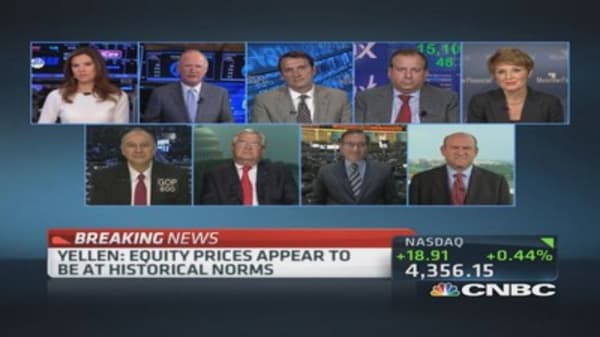Of all the ills afflicting the U.S. economy since the Great Recession, inflation has been pretty low on the list of things to worry about.
Looks like it's time to add it back on the list.
After years of relatively dormant price increases, the cost of consumer goods and services has started to perk up in the last few months, much to the chagrin of both American households and officials at the Federal Reserve.
Just how worried should you be? Here are a few things to consider.
Why are prices jumping?
Much of the jump is being seen at the supermarket, where food prices rose 0.5 percent in May, the fifth consecutive monthly increase. The ongoing severe drought in California, the source of nearly half of U.S.-grown fruits and vegetables, pushed the prices of those commodities up 1.1 percent last month. With no drought relief in sight, prices are expected to continue rising.
Other food categories are also getting more expensive, according to the latest data from the government. Meat, poultry, fish and eggs surged 1.4 percent.
Read MoreFed faces tough decision on inflation: Jim Paulsen
Fuel prices are also moving higher. Overall, energy prices were up nine-tenths of a percent in May, led by a 2.3 percent jump in electric prices. Gasoline prices climbed seven-tenths of a percent. Recent militant attacks on Iraqi oil facilities could push gasoline prices higher—just at a time when they typically begin to ease now that refiners have built up supplies of summer blends.
The more worrisome price jump, though, is coming in the so-called core rate of inflation that excludes food and energy prices.





